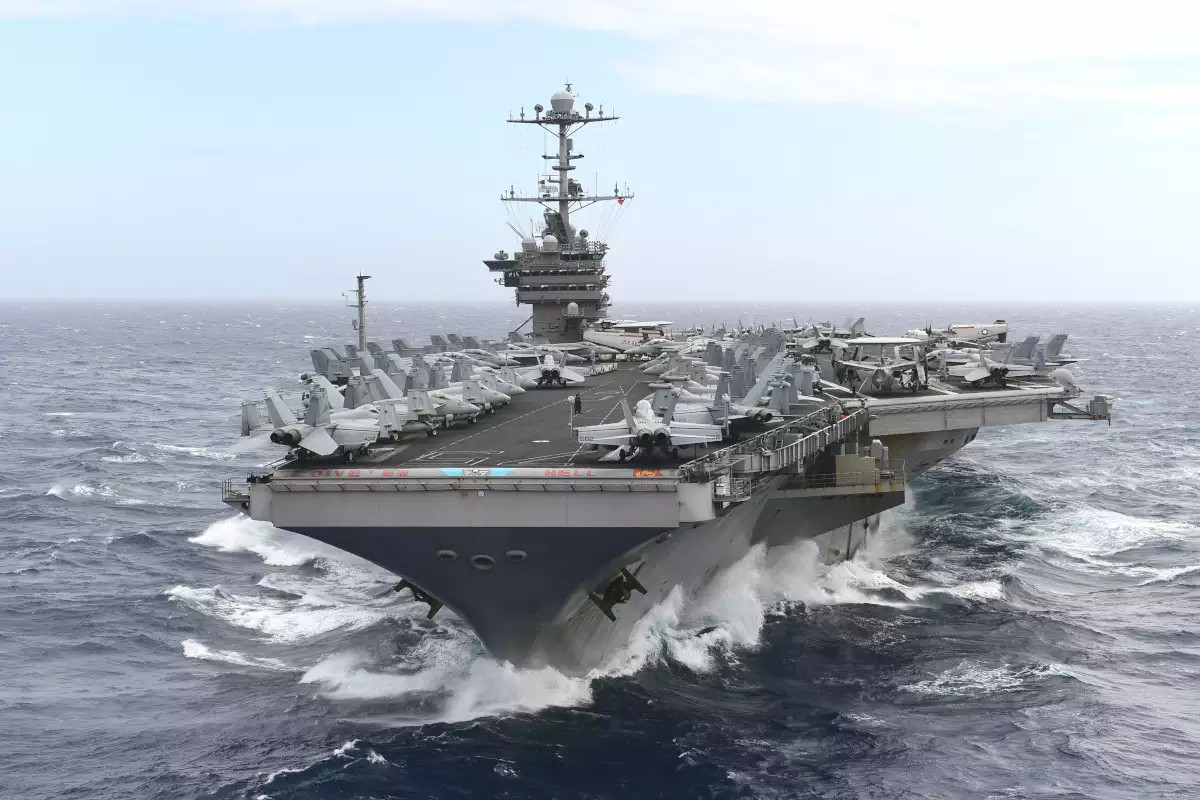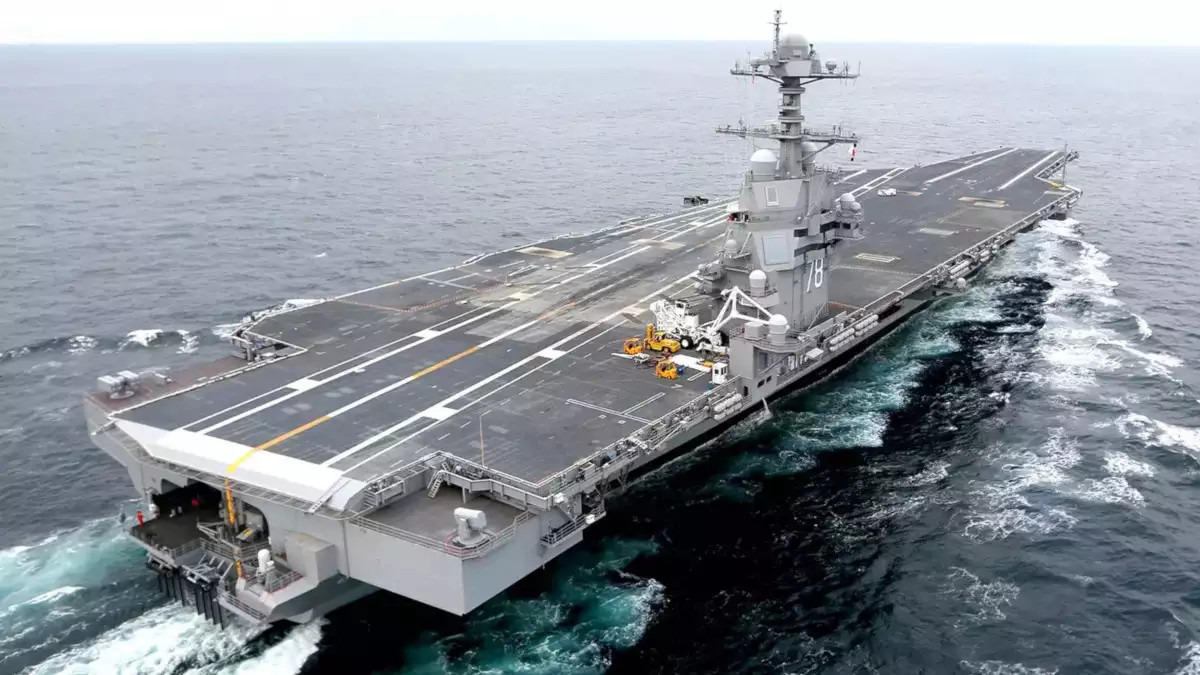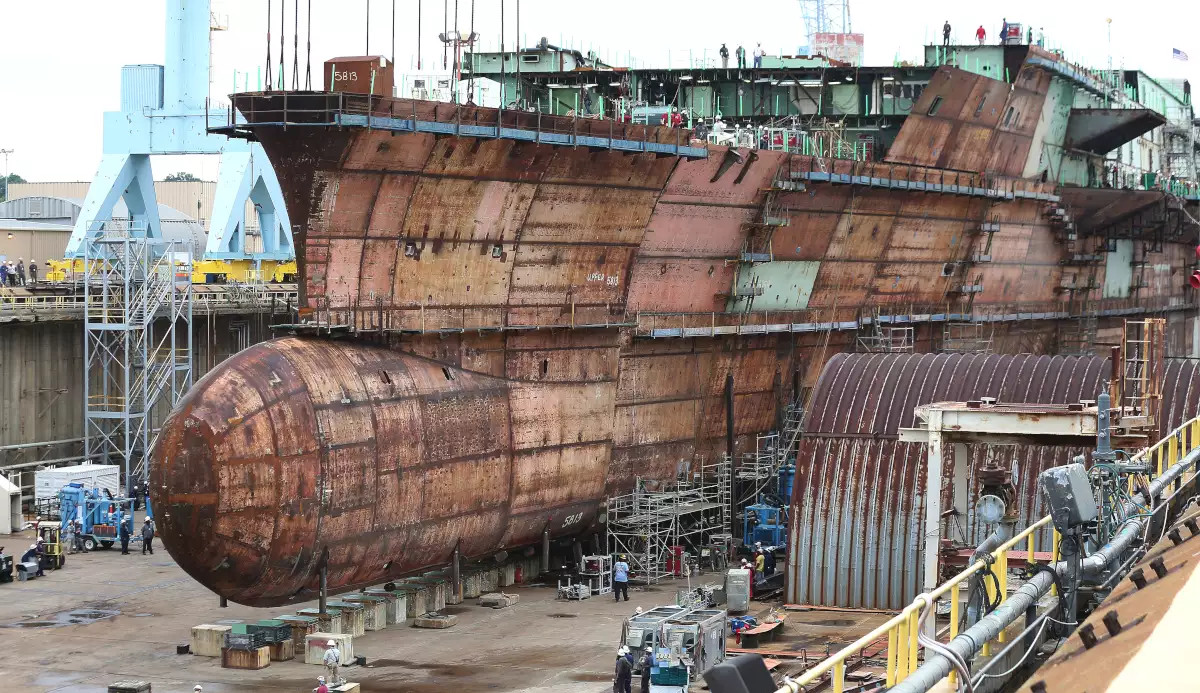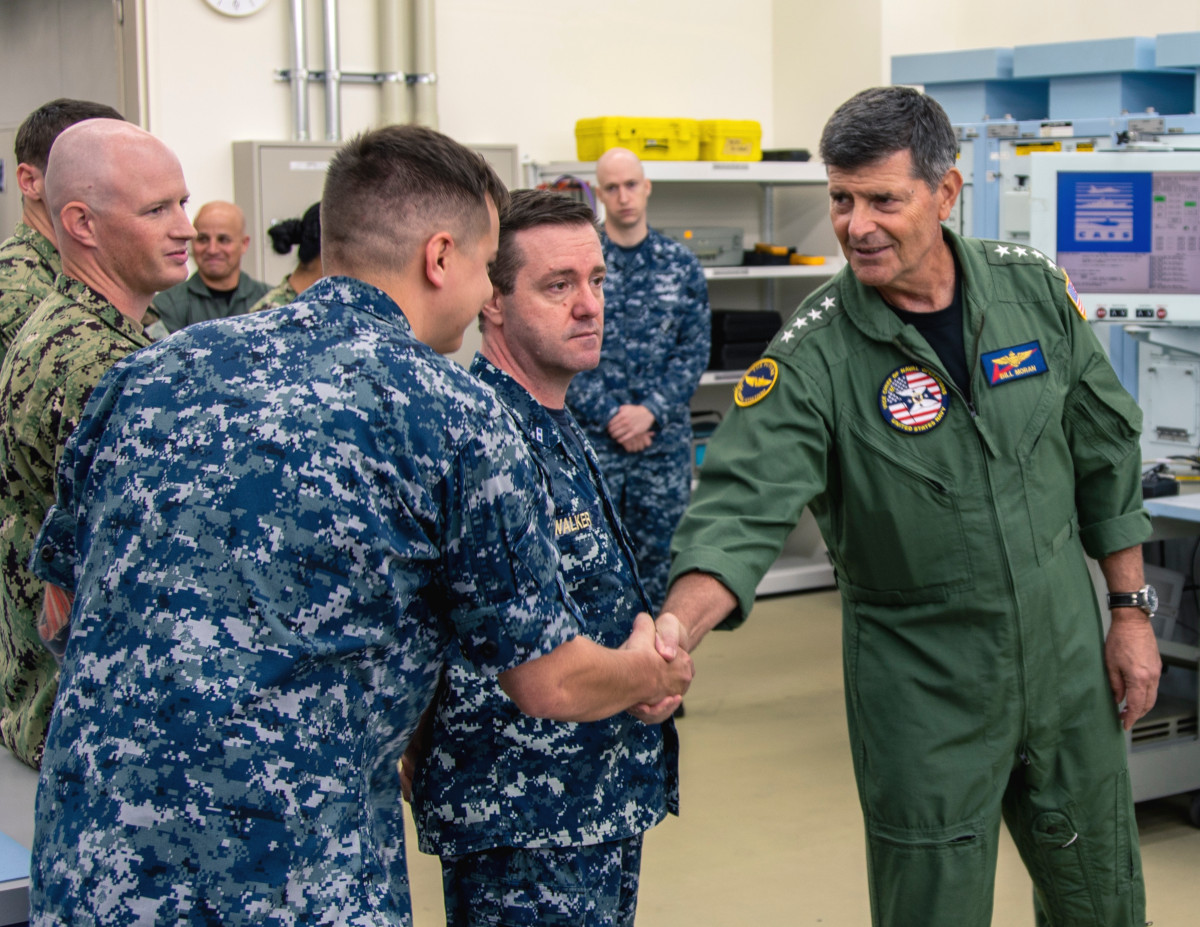President Donald Trump says he has overridden an “order” to retire the Nimitz-class aircraft carrier USS Harry S. Truman ahead of schedule, a day after Vice President Mike Pence first revealed that the Administration was backing away from the plan during a tour of the ship. There has been growing opposition to the plan, especially among members of Congress, since it first emerged in February 2019. At the time, The War Zone laid out a detailed case for why the proposal was unlikely to proceed and this especially rapid decision to abandon it only further calls into question why the Trump Administration, the Pentagon, and the U.S. Navy proffered it up in the first place.
Trump made the announcement about the new plan to proceed as planned with Truman’s mid-life rehab process, technically referred to as a Refueling and Complex Overhaul (RCOH), via Tweet on May 1, 2019. The President framed the decision as one he had personally made and Pence had similarly described it this way in his own his comments to the ship’s crew on Apr. 30, 2019, though it is unclear what actually led to the Trump Administration abandoning the proposal.
“I am overriding the Decommission Order of the magnificent aircraft carrier Harry S. Truman, built in 1998 (fairly new), and considered one of the largest and finest in the world,” Trump Tweeted out. “It will be updated at a fraction of the cost of a new one (which also are being built)!”

It is important to immediately note that there is no “decommission order” to rescind. The Trump Administration had formally proposed the plan in its own budget for the upcoming 2020 Fiscal Year, which Congress looked guaranteed to oppose, and now Trump and the Pentagon appear to have abandoned the idea in the face of mounting pressure from Congress.
In February 2019, it first emerged that the Navy was looking to cancel Truman’s RCOH, which would effectively lead to its early retirement sometime in the mid-2020s. If the rehab goes ahead as scheduled, the carrier will be laid up for four years between 2024 and 2028, but will then continue to serve through 2048. Canceling the RCOH would have reportedly freed up between $4 and $5.5 billion for the service to spend on other priorities or otherwise help offset the costs of other major development and acquisition programs over the coming years. This was later revised down to $3.4 billion.

The proposal to cut Truman’s service life short almost immediately prompted a bi-partisan backlash on Capitol Hill. The biggest complaint, as Trump’s Tweet notes, has been that the carrier is relatively young and still has decades of service life left in it, both of which are true.
The projected funds that the Navy would be free to spend in other ways also seems like a relative pittance. The $3.4 billion to keep Truman operational for another 25 years, for a full service life of around 50 years, is a bargain compared to the costs of buying a new Ford-class aircraft carrier over the same period.
If the actual issues were a matter of overall operating costs and force structure, the RCOH would still have offered a cost-effective means of ensuring the carrier could remain in some form of ready reserve state or even serve in a more limited role as a training carrier. Not surprisingly, the announcement that the Trump Administration was reversing course was met with a raft of positive statements from Senators and Representatives who had advocated against the plan.

“So far, my subcommittee has received no further information about any formal revision to the budget request for 2020, or to the Navy’s long-range fleet inventory plans and Aircraft Carrier force structure reflecting this change in position,” Representative Joe Courtney, a Connecticut Democrat who is in charge of the House Armed Services Committee’s Seapower Subcommittee, said a statement. “I can only hope that we now have the Administration’s strong support as we prepare to mark up the 2020 defense authorization bill in the coming weeks and move ahead with our planned restoration of the refueling for the USS Harry S. Truman.”
Still, by all indications, the debate over Truman’s future seems have come to an end and played out in an almost identical manner to discussions about retiring the Nimitz-class carrier USS George Washington in 2014 under President Barack Obama, though it did so much faster in this case. The debate over Washington was wrapped up in a series of mandatory budget cuts known as sequestration, which led significant changes in U.S. military planning and force structure decisions.
In the end, the Obama Administration’s fight with Congress over the carrier dragged out for nearly a year, whereas the decision regarding Truman survived just three months of public scrutiny. Given the experience with Washington, which involved a real issue of truncated budgets, questions remain about why the Trump Administration, the Pentagon, and the Navy all agreed to propose this plan in the first place when it looked almost certain to be dead on arrival in Congress and does not appear to have been a particularly necessary spending cut.
Previous spending outlays had shown the Navy had planned to request less than $17 million in the 2020 Fiscal Year budget to support the RCOH, further highlighting the relatively small amount of money in question. The service’s latest 30-year shipbuilding plan, which includes notes on total fleet sizes and plans to decommission ships, and that the service released in March 2019, makes no specific mention of Truman at all, let alone a possible early retirement date and how much money would get saved in the process.
Initial reports had also said that the Navy agreed to this plan in 2018 after consultations with then-Secretary of Defense James Mattis, and on the advice of Pentagon’s Office of Cost Assessment and Program Evaluation (CAPE), in exchange for approval for its block buy of two new Ford-class aircraft carriers. Regardless of what happens to Truman now, this purchase order has gone ahead, as Trump noted in his Tweet.

However, on Apr. 30, 2019, the same day that Mike Pence announced plans to abandon the proposal, U.S. Navy Admiral Bill Moran, the nominee to become the service’s next top officer, or Chief of Naval Operations (CNO), defended the proposal during a confirmation hearing in from the Senate Armed Services Committee. He said the Navy needed to free up the money from the RCOH to help fund other efforts, such as the development and procurement of new submarines and large drone ships.
There was no apparent reference during the hearing to the previously reported deal to retire Truman in favor of buying two new Ford class carriers. In addition, the Navy has said that the Ford block buy will save approximately $4 billion in the coming years, which is one of the figures reported regarding how much the service would free up if it canceled Truman’s RCOH. This raises a question about whether there has been some confusion about what procurement decisions would actually lead to these projected additional funds becoming available for other efforts.
An entirely separate news report suggested that the push for Truman’s early retirement came from Mattis’ opposition to aircraft carriers in general, a view that now Acting Defense Secretary Patrick Shanahan purportedly shares. This does not explain why the Pentagon then approved the Ford block buy and is entirely out of sync with statements senior Department of Defense and Navy officials have made persistently over the years. The Navy, in particular, repeatedly complains about a “carrier gap” and the difficulty in meeting its Congressional mandate to have at least 11 flattops in service at all times.
“We have for years evaluated the threats to our aircraft carriers and the other ships in the strike group to be able to deal with those [threats],” Admiral Moran said during his confirmation hearing, even as he defended Truman’s early retirement, followed by an offer to provide classified briefings regarding efforts to improve the survivability and other capabilities of these ships. “The aircraft carrier is the most survivable airfield that we have today – anywhere. And we project it will remain that way well into the future.”

All told, from the very beginning, the entire debate over Truman’s future seems to have been more about a novel way to secure additional funding from Congress, rather than about cutting costs or shifting existing funds around. The proposal put legislators in a bind where they would either have had to defer funding for the programs the Navy says it needs in favor of continuing with the RCOH as planned, or fund both.
It seems hard not to see this as anything but a deliberate decision on the part of the Pentagon and the Navy, and one that appears to have quickly prompted the actual desired result. “I won’t decline more money,” Admiral Moran deftly responded during his confirmation hearing when asked if he would welcome Congress finding the money for the priorities he had laid out, as well as Truman’s RCOH.
Still, in an era of record high U.S. defense spending, it remains entirely unclear why the Trump Administration would have felt it necessary to go this route in order to secure additional funding. $3.4 billion, the estimate of what the Navy expected to be able to reallocate over the course of multiple years, reflects less than one half of one percent of the proposed defense budget for just the 2020 Fiscal Year.
The Navy does appear well on its way to “shaking the tree” for that extra money, but it’s hard to see how this process, and the political capital expended for no reason, was better than simply asking for the funding up front.
Contact the author: jtrevithickpr@gmail.com
